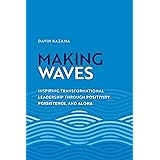A truly comprehensive fitness regimen demands rigorous attention to lower body development. As illustrated in the dynamic energy of the accompanying video, an effective leg workout is not merely about aesthetics; it is fundamental to overall athletic performance, functional strength, and metabolic health. Neglecting the foundational power of your legs compromises strength, stability, and injury resilience across all physical activities.
The Unrivaled Importance of Advanced Leg Training
Prioritizing advanced leg training is a cornerstone for any serious fitness enthusiast or athlete. Developing robust lower body strength directly translates into improved power output for countless movements, from sprinting and jumping to lifting heavy objects.
Beyond Aesthetics: Functional Strength and Performance
Leg muscles, encompassing the quadriceps, hamstrings, glutes, and calves, are essential for practically every athletic endeavor. Strengthening these muscle groups enhances explosive power, improves agility, and provides the necessary stability for complex movements. This functional strength is critical for everything from competitive sports to daily tasks.
Moreover, a powerful lower body provides a stable base for upper body exercises, allowing you to lift heavier and perform movements with greater control. It mitigates the risk of injuries, particularly in the knees and lower back, by strengthening supporting structures and improving biomechanics.
Metabolic Advantages and Hormonal Response
Engaging large muscle groups, such as those in the legs, triggers a significant metabolic response. This type of training burns more calories during and after the workout, contributing to more efficient fat loss and improved body composition. Furthermore, intense lower body training can stimulate a greater release of anabolic hormones, including testosterone and growth hormone.
These hormones are vital for muscle protein synthesis, facilitating muscle growth and repair throughout the entire body. Maximizing this hormonal environment is a strategic advantage for anyone pursuing significant gains in strength and muscle mass.
Crafting an Effective Leg Workout Routine
Designing a superior leg workout involves a nuanced approach to exercise selection, volume, intensity, and strategic progression. It moves beyond simply lifting heavy weights to an intentional manipulation of training variables.
Strategic Exercise Selection: Compound vs. Isolation
A balanced leg training program integrates both compound and isolation movements for comprehensive development. Compound exercises are the foundation, while isolation exercises ensure no muscle group is left underdeveloped.
Mastering Compound Leg Movements
Compound exercises recruit multiple joints and muscle groups simultaneously, making them highly efficient for building overall lower body mass and strength. Movements like back squats, front squats, deadlifts (conventional, sumo, Romanian), and leg presses are paramount.
These exercises also demand significant core engagement, further contributing to overall stability and power. Proficiency in these fundamental lifts provides the framework for more advanced training protocols.
Integrating Isolation Exercises for Full Development
Isolation exercises target specific muscle groups with minimal involvement from others, allowing for precise hypertrophy and addressing weaknesses. Examples include leg extensions (quads), hamstring curls (hamstrings), calf raises (calves), and glute bridges or hip thrusts (glutes).
Utilizing these movements can help to sculpt specific areas, enhance muscle symmetry, and provide an additional stimulus for growth that compound lifts alone might not fully provide. They are crucial for achieving complete lower body development.
Optimizing Rep Ranges and Volume for Hypertrophy and Strength
Effective programming necessitates varying rep ranges and overall training volume. For strength, lower reps (1-5) with heavier loads are optimal, while hypertrophy generally responds best to moderate reps (6-12) with controlled tempos.
Volume, defined by sets and reps, should be progressively increased over time to stimulate continued adaptation. Periodically adjusting these variables prevents plateaus and ensures consistent progress in your leg workout regimen.
Periodization for Continuous Progress
Periodization, the systematic planning of training, is crucial for long-term progress and injury prevention. This involves structuring training into cycles that vary intensity, volume, and exercise selection over time.
Implementing macrocycles, mesocycles, and microcycles allows for planned progression, deloads, and phases focusing on different adaptations (e.g., strength, power, endurance). This advanced planning ensures continuous improvement without overtraining.
Integrating Core Strength: The Synergy of Legs and Abs
A powerful lower body is inextricably linked to a strong and stable core. The abdominal and lower back muscles act as a critical link, transferring force between the upper and lower body and stabilizing the spine during heavy lifts.
Core Stability in Lower Body Movements
Exercises like squats and deadlifts inherently demand significant core stability to maintain proper form and protect the spine. A weak core can compromise technique, limit lifting potential, and increase the risk of injury.
Therefore, dedicated core training is not a separate entity but an integral component of an effective lower body program. Exercises such as planks, anti-rotation presses, and side planks strengthen the core’s ability to resist movement.
Targeting Abdominals for Overall Power
Beyond stability, direct abdominal work contributes to overall power output and spinal health. Exercises targeting the rectus abdominis, obliques, and transverse abdominis enhance the core’s ability to brace and generate force.
Including exercises like hanging leg raises, cable crunches, and ab rollouts ensures a well-rounded and resilient midsection. This comprehensive approach maximizes the efficiency and safety of every leg workout.
High-Intensity Leg Workouts: Emulating Army Fitness Standards
For those seeking peak physical conditioning reminiscent of military-grade fitness, high-intensity leg workout protocols are essential. These routines emphasize functional strength, endurance, and explosive power, often with minimal equipment.
Functional Training and Endurance for Lower Body
Army fitness often focuses on functional movements that simulate real-world demands, such as carrying loads, navigating challenging terrain, and sustained exertion. Incorporating exercises like farmer’s carries, sled pushes/pulls, and weighted step-ups builds both strength and endurance.
These movements challenge the entire kinetic chain, enhancing both muscular and cardiovascular stamina. Training for sustained effort is a hallmark of truly robust leg conditioning.
Incorporating Explosive Movements: The Power of Plyometrics
Plyometric exercises are critical for developing explosive power, a key component of athletic performance. Movements like box jumps, broad jumps, squat jumps, and bounding train the muscles to exert maximum force in short intervals.
These exercises improve rate of force development and reactive strength, which are vital for speed, agility, and dynamic movements. Integrating plyometrics systematically enhances the power aspect of a comprehensive leg training program.
Demystifying “Sapate”: A Versatile Full-Body Challenge
The term “sapate” often refers to variations of the burpee, an exercise celebrated in military and high-intensity interval training (HIIT) circuits for its full-body benefits. While primarily a conditioning tool, sapate-style movements significantly engage the lower body.
Understanding the Sapate/Burpee Concept
A standard burpee involves a squat, thrusting the feet back into a plank, performing a push-up, returning to a squat position, and then jumping vertically. This compound, multi-joint movement rapidly transitions between positions, taxing both muscular strength and cardiovascular endurance.
The lower body is heavily involved in the squat, the explosive jump, and stabilizing during the plank and push-up phases. It’s an excellent way to elevate heart rate and build explosive lower body power without heavy weights.
Progression and Variations for Enhanced Leg Engagement
To specifically enhance lower body engagement within sapate-style exercises, consider variations. Adding a tuck jump at the top, increasing the depth of the squat, or performing a split lunge jump instead of a vertical jump amplifies the challenge.
Incorporating weighted vests or performing them on a slight incline can further increase resistance, pushing the boundaries of lower body strength and endurance during this high-intensity movement.
Advanced Techniques for Lower Body Development
Once foundational strength is established, advanced training techniques can be employed to break through plateaus and maximize muscle hypertrophy. These methods manipulate intensity and volume in sophisticated ways.
Drop Sets, Supersets, and Pyramid Training
Drop sets involve performing an exercise to failure, then immediately reducing the weight and continuing with more reps. This technique floods the muscle with blood and extends time under tension, stimulating growth.
Supersets pair two exercises performed back-to-back with minimal rest, either targeting opposing muscle groups or the same muscle group for enhanced fatigue. Pyramid training systematically increases or decreases weight and reps over successive sets, varying the stimulus.
Unilateral Training for Symmetry and Balance
Unilateral exercises, performed one limb at a time, are invaluable for addressing muscular imbalances and improving stability. Movements such as lunges (walking, reverse, curtsy), single-leg Romanian deadlifts, and Bulgarian split squats isolate each leg.
This approach highlights discrepancies in strength or development between sides, allowing for targeted correction. Enhanced balance and coordination are significant byproducts of consistent unilateral leg workout training.
Recovery and Nutrition: Fueling Peak Leg Performance
The most intense leg workout will be futile without adequate recovery and proper nutritional support. Muscle growth occurs during rest, not during the workout itself.
Strategic Post-Workout Recovery
Active recovery, such as light cardio or stretching, can help reduce muscle soreness and improve blood flow. Prioritizing quality sleep is non-negotiable, as this is when the body undertakes the most significant repair and growth processes.
Techniques like foam rolling, massage, and cold therapy can also aid in mitigating delayed onset muscle soreness (DOMS) and promoting faster recovery, allowing for more consistent high-quality training sessions.
Macronutrient Timing for Muscle Growth and Repair
Optimal nutrition, especially macronutrient timing, is critical for muscle repair and hypertrophy. Consuming adequate protein throughout the day, particularly post-workout, provides the amino acids necessary for muscle protein synthesis.
Complex carbohydrates replenish glycogen stores, essential for energy, while healthy fats support hormone production and overall cellular function. A well-structured nutritional plan complements every facet of a demanding leg training regimen.











